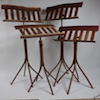I had an interesting conversation with a Felder salesman today. He said that all of the machines I mentioned above are available with identical horsepower 1 phase motors, though they are special order items. Is that possible? Are there 7.5HP 220V 1-phase motors? Wouldn't the current required max out what is available to a residential home? I thought much of the reason to go to higher voltage motors was to half the current required.
- After I ask a stranger if I can pet their dog and they say yes, I like to respond, "I'll keep that in mind" and walk off
- It's above my pay grade. Mongo only pawn in game of life.




 Reply With Quote
Reply With Quote




